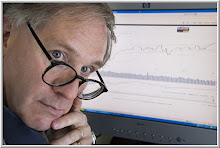1/3/2025 - A wise friend once said to me, "Love never dies; it has to be killed". We don't lose our love for markets and trading; we have to kill that love by attempting to trade in ways that don't genuinely draw upon our greatest strengths, talents, and skills. One strength that brought me to psychology is the ability to listen to people over time, relate to them, identify what they're going through, and help them craft strategies for change. If I had to conduct an entire therapy in 30 minutes, I would quickly lose my love for psychology. It would be a frantic process, devoid of the fulfillment of truly getting to know someone and make a positive difference in their life. Similarly, I've found that my talent in trading is listening to markets over time, discerning themes, and participating in those once I have a solid understanding of what is going on. If I attempt to conduct trading on a scalping basis, coming up with trades every few minutes, trading no longer becomes an expression of who I am. My love for trading doesn't die; by attempting to be someone I'm not, I've managed to kill that love. Lots of gurus out there; it's great to learn from them. Ultimately, however, we have to synthesize what we learn from mentors with who we truly are. The challenge is to figure out how to be the best version of you. Whatever is going to make you very successful in trading will draw upon what has made you successful in other areas of life. That's an important lesson for development in the new year--
12/31/2024 - To stay fresh and opportunity-focused in markets, it's important to always learn and do new things that sharpen your craft. When we continually grow in our trading, there's an ever-present learning P/L, fueled by the excitement of discovery.
In coming posts, I'll elaborate on an approach to trading that I'll be refining in 2025. The approach makes use of charts, where each bar represents a given amount of volume. I typically look at four "time frames" simultaneously: high frequency, short-term, medium-term, and longer-term. The high frequency chart might draw bars every few hundred shares or contracts traded; the longer-term chart might capture bars of tens of thousands of shares.
Once you have displays of volume bars, interesting questions emerge: What does it mean when the range of the bars expands or contracts? What does it mean when bars open at their high or low and close at their opposite extreme? What does it mean when the volume bars form a tight/narrow range? My observation is that, when we view markets with volume-based bars on multiple scales, we can capture the real-time unfolding of supply and demand. Instead of simply trading chart patterns, we can look within and across patterns to identify when bulls and bears are in control and when they are in balance.
The goal of such an approach is understanding: flowing with evolving market activity, not locking ourselves into fixed views. Over time, it becomes clear that volume bars behave a certain way when the market is topping or bottoming, when it is trending, etc. The patterns derive their significance across the multiple time horizons.
In the new year, may you always innovate, always expand your understanding!
===
How will you track your performance in 2025 to ensure that the new beginning is truly powerful?
What will challenge and excite you in the new year to bring out your best efforts?
Too many New Years begin with lofty resolutions that quickly fade away as the days pass. How will you keep your vision alive so that each day, each week, each month is a new beginning?
There is much more to change than setting goals.
We become what we consistently do.
What will you do consistently in 2025? What will be your focus?
Happy New Year--
Brett
.





